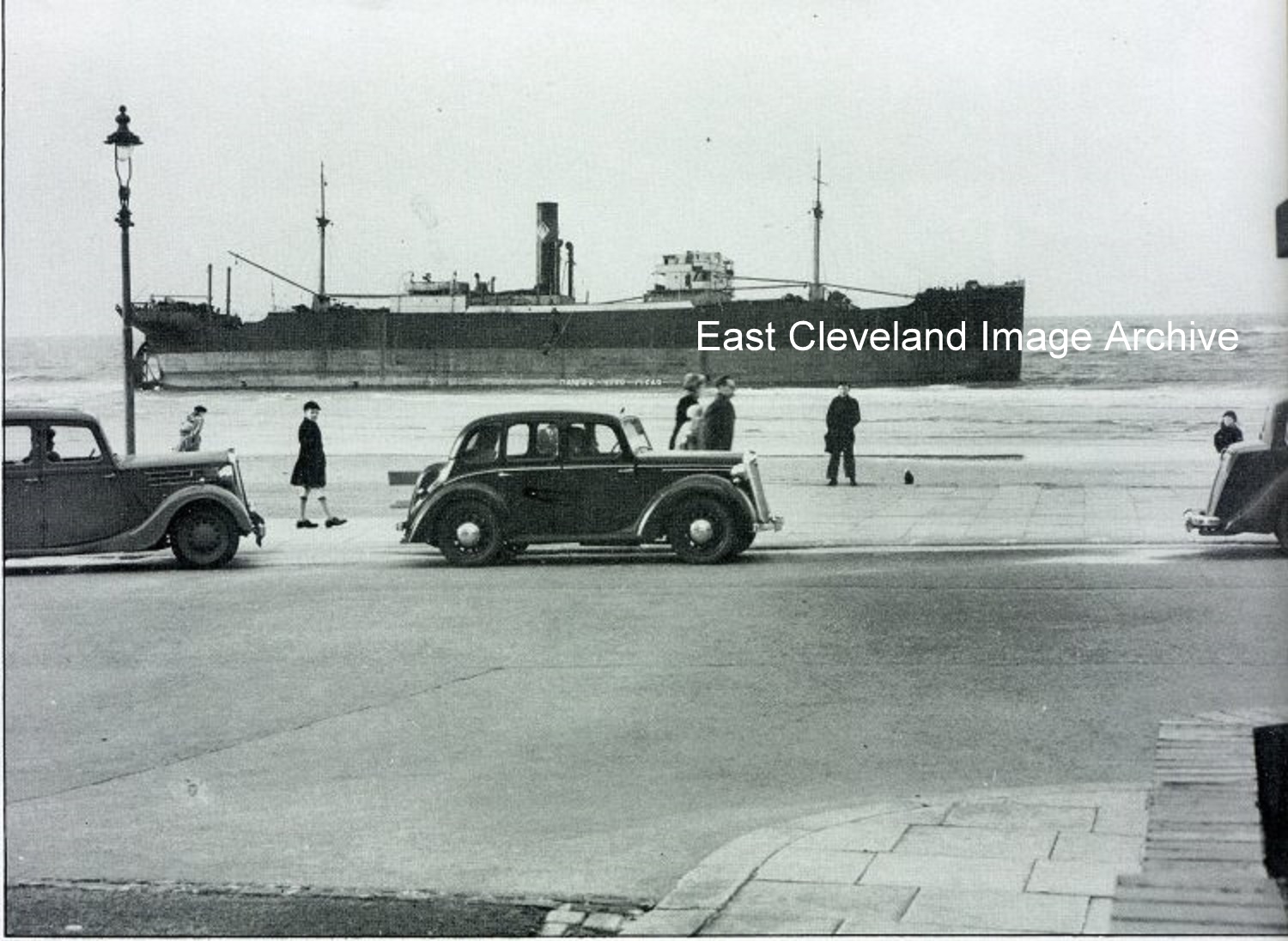
Fred Brunskill advises us: ”The Greek steamship Taxiarchis struck the Westscar rocks during the afternoon of January 14th, 1952 I remember watching the five tugs brought from the Tees as they tried to refloat her. Although the weather had been calm when she became grounded, worsening gales proved too much for the hull and she was holed beyond repair. the 28 crew were taken off by local fishermen and she ended up on the beach opposite the Coatham Hotel. She was eventually dismantled for scrap by Thomas Ward’s of Sheffield.” Kon Budkiewicz tells us: ”Aged 6 years, I was taken to see this ship by my father. I witnessed organised bagging and removal of bunker coal through a low-level access door.” Dave Cusson tells us: ”My father was a well-known Redcar butcher. One of his customers, and elderly lady as I recall, was walking her dog along the sands during a sea fret. Seems she heard this terrible grinding noise from the sea just as the mist cleared – allowing her to see this enormous ship coming for her. She turned and ran as hard as she could all the way through the soft sand and onto the promenade, scared out of her wits!” Alan Etherington tells us: ”I was at West Dyke Primary School on the afternoon Taxiarchis ran aground. The mother of one of the boys came at playtime and told him that there was a ship on the rocks. Word spread like wildfire and at the end of school a lot of us rushed to see what had happened and there it was just off the Coatham Hotel. It was winched to just above the low tide line so that at suitable times of the tide it was possible to walk round it. It was then slowly emptied of coal and dismantled.” Pete Ward tells the Archive: “I remember the Taxiarchis as though it was yesterday: Like the lady previously, I was on Coatham beach with my Granddad (John Charles Thompson of Redcar Gas Works. I must have skived off school that day) gathering sea coal. I was holding my Granddad’s bicycle with a couple of sand bags filled with sea coal when we heard this grinding sound, then out of the mist appeared the Taxiarchis. You could not miss who scraped her, ‘Thomas Wards’ was painted on the starboard side, in big bold white letters facing Coatham.” Michael Henry adds: “I remember this well, we lived in Arthur Street and I was a pupil at the then Sir William Turner’s Grammar School on Coatham Road. Arthur Street is the next street to Henry Street. Henry St and Turner Street, the next one, border the Coatham Hotel. The sea front, is Newcomen Terrace, the names together form the name of the founder of our school, founded in 1691. The locals benefitted from coal being dumped of the Taxiarchis, as I remember as they scrapped her. The Coatham Hotel was one of the centre pieces in the Movie “Atonement” in 2006.”
Image courtesy of Mike Holliday, thanks to Fred Brunskill and Kin Budkiewicz for this information, also to Dave Cusson, Alan Etherington, Michael Henry and Peter Ward for the updates.
Recent Comments